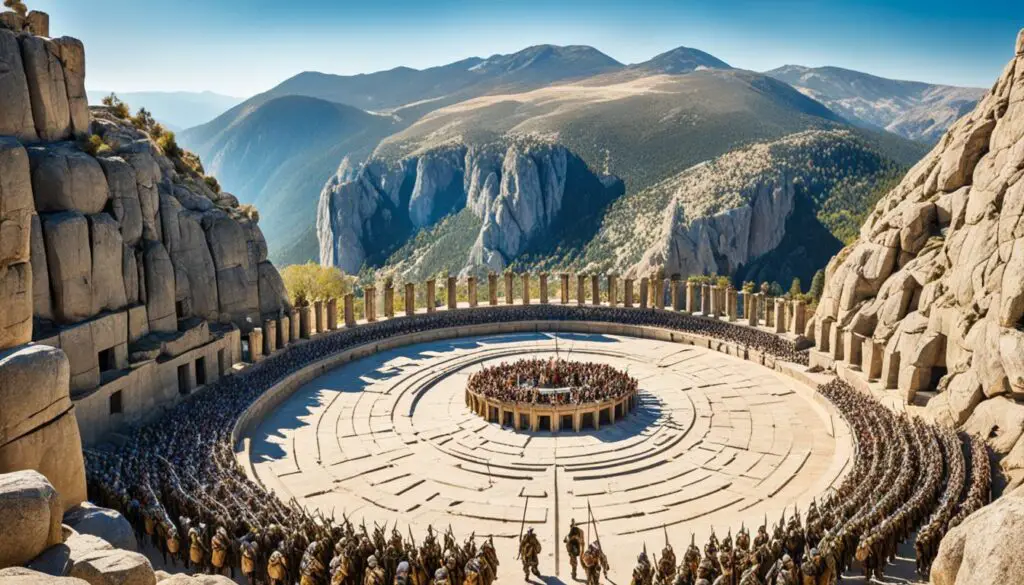In ancient Greece, Sparta was known for a special kind of leadership. It had two kings at the same time.
These kings came from two different families, the Agiads and the Eurypontids. They were part of a tradition that started around 930 BC, and they said they were from the family of Heracles.
The Agiads like Eurysthenes and the Eurypontids like Procles had a long history. They were important in Spartan life.
The most important family was the Agiads. Kings like Agis I and Cleomenes III were from this family.
The other family, the Eurypontids, also had their own great kings. They helped make Sparta what it was.
This way of ruling by two different kings was unique to Sparta. Other parts of Greece didn’t do things this way.
Having two kings kept the families strong. It also made sure that Sparta was always led well. This system lasted a long time.
Kings’ sons didn’t have to do the hard training that others did. But many of them still chose to. This made them very respected in Spartan society.
Key Takeaways
- Sparta was ruled by a unique dual monarchy system featuring kings from the Agiad and Eurypontid dynasties.
- The Agiad and Eurypontid dynasties began around 930 BC and traced their lineage back to the heroic twins, descendants of Heracles.
- Notable Agiad rulers included Eurysthenes, Agis I, and Cleomenes III, while the Eurypontid lineage included Procles, Eurypon, and Charilaus.
- Spartan kings received posthumous hero cults, a testament to their revered status in society.
- Heirs to Spartan kingship were exempted from the tough Agoge training, enhancing their stature for ascension to the throne.
Introduction to Ancient Sparta
Ancient Sparta was located in the Peloponnese area. It was famous for its strong army and clear social rules.
Around 1000 BC, it started to become an important place. But, it was in the 6th century BC that it really stood out.
At this time, Sparta was ruled by two kings who had both military and religious roles.
The Spartan society was built on a strict social class system. At the top were the Spartiates, then the Perioeci, and finally the Helots who worked for the state.
This system helped keep their army strong. By the 6th century BC, the Spartans were known for being unmatched in battle.
Sparta’s ways were shaped by Lycurgus, a famous lawmaker. He set up many systems that helped Sparta be ready for war all the time.
Sparta’s dedication to fighting was shown at the Battle of Thermopylae in 480 BC. King Leonidas and his 300 Spartans faced a huge Persian army for seven days.
But, Spartan society did face some tough times. Around the 8th to 7th centuries BC, there was fighting within Sparta.
This included a long war to control the Messenians. This war lasted almost 19 years. Despite these troubles, Sparta remained a powerful military force until the Battle of Leuctra in 371 BC.
Sparta saw many big battles, including the Peloponnesian War with Athens from 431 to 404 BC.
After losing to Athens, Spartan power began to decline. By the 2nd century BC, Sparta joined the Achaean League and lost its independence.
In the end, ancient Sparta was known for its focus on the military, strong laws, and key leaders like Lycurgus and Leonidas.
Today, people are still intrigued by this unique society.
The Dual Kingship of Sparta
Sparta set itself apart with a unique dual kingship system. Here, two kings reigned at the same time.
This was a significant part of Spartan life and law. The system started with twin brothers, each founding their own royal line, the Agiad and Eurypontid kings.
Origin of the Dual Kingship
The story of Sparta’s dual kings is indeed special. It begins with Aristodemus’s twins, Eurysthenes and Procles.
Legends say they both became kings, kicking off the idea of sharing the throne. This was to settle who was older.
The kings ruled equally and were seen with divine respect because of their link to Hercules.
The Agiad and Eurypontid Dynasties
The Agiad and Eurypontid were the two Spartan royal houses. Kingship moved between these families to maintain power fairness.
These kings led armies, oversaw religious rituals, and were judges for some crimes. While their judicial duties decreased over time, they still played key roles.
The competition among the kings ensured no one had too much power. This system gave Spartans a way to express different views.
Well-known kings like Leonidas I, Agesilaus II, and Cleomenes III served during Sparta’s peak. Their leadership highlights the strengths of Sparta’s unique governing model.
Who Was the King of Sparta?
In Sparta, there were two royal families: the Agiad and Eurypontid. This setup was key to having balanced Sparta’s military leadership.
It all began with a rich history that linked these families to the heroic lineage of Spartan kings. They were thought to descend from the demigod Heracles.
This shows how deeply Greek myths were part of ancient Greek monarchies.
In the 6th century BCE, Sparta faced a big problem. The king and queen didn’t have children who could become the next rulers.
At this time, Leonidas was born as King Anaxandrides’ son. This made him a potential future king.
After Anaxandrides died, Cleomenes became the king. His rule lasted from 540 BCE to 490 BCE. During his time, he did many important things for Sparta.
He helped in getting rid of the tyrant in Athens. Cleomenes also supported democratic changes in 508/7 BCE.
However, he didn’t back the Ionians’ revolt against Persia in 499 BCE.
Dorieus left Sparta when Cleomenes became king. This move made Dorieus lose his chance at becoming king.
Cleomenes faced troubles as he was accused of being insane. He was locked up and died in strange circumstances.
This was when Leonidas got a real chance to become king.
Leonidas did something very smart. He married Gorgo, Cleomenes’ daughter. This directly helped him become the king.
He had a powerful right to the throne as well. He became famous for leading Spartans at Thermopylae.
Thermopylae was where Leonidas’ 300 Spartans fought bravely against the Persians in 480 BCE.
This battle showed the world how strong and brave the Spartans were. After his heroic act, his son Pleistarchus followed as king.
During these times, the two royal families had to work together in Sparta. The interactions between Agiad and Eurypontid families shaped the city’s life.
This made a big impact on how Sparta leadership was seen. Their actions are still remembered as part of ancient Greek monarchies.
Legendary Kings of Ancient Sparta
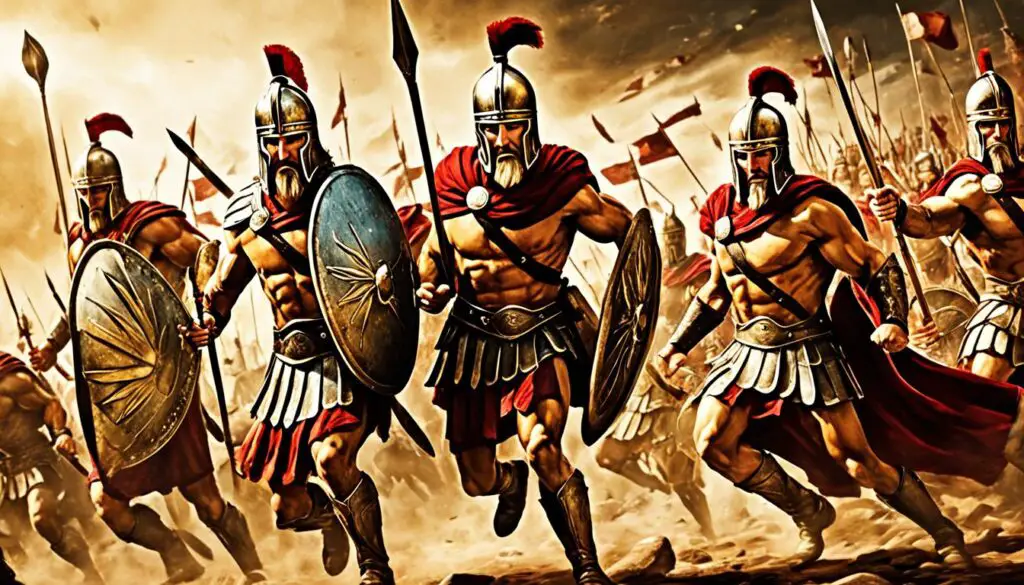
The stories of Spartan kings mix history with myth, making ancient Sparta’s culture an interesting topic.
In Sparta, highlighting a king’s family line was key. The names of Spartan kings showed not just their heritage but also their power and divine link.
Agis I, for instance, reigned during the 11th century BC. He built Patrai and took Helos.
Anaxandridas II, around 550-520 BC, led Sparta to control a huge part of Peloponnese. He also bested Tegea and Argos, proving Spartan strength.
Leonidas I stands out for leading at Thermopylae from 490-480 BC. He and 300 Spartans famously slowed the Persian attack.
This act became a symbol of Spartan courage. Leonidas’ marriage to Gorgo also highlights the blend of personal and political goals in Spartan life.
Agesipolis I showed his skills from 395-380 BC by diverting a river to take Mantineia.
Additionally, Pausanias from 409-395 BC was praised for different reasons.
Despite his success at Aegospotami, not capturing Athens shows the challenges of Spartan rule.
Family played a big role in Sparta’s royalty. Leonidas became king in a surprising way.
It came about due to his father’s illness and his rival’s trouble, adding to the kings’ mystique.
Spartan kings’ tales of courage, cleverness, and politics made them legendary. Stories about them are deeply tied to ancient Sparta’s way of life.
These myths celebrated Spartan kings’ greatness and the strength of their leadership.
Lelex and the Lelegid Dynasty
The story of Lelex gives us a peek into Spartan history. Mythology says Lelex, a founder of Sparta, started the famous Lelegid Dynasty.
This dynasty helped shape Spartan culture and history. Kings like Myles and Eurotas from his line influenced Sparta greatly.
Founding of Sparta
Sparta’s beginning mixes history with myths. A story says Eurotas named the city after his daughter, Sparta.
This gave Sparta its landmark area, the Eurotas Valley. It became crucial for Sparta’s growth and its powerful rule.
The Rise of the Lelegid Kings
Kings Myles and Eurotas, Lelex’s heirs, played key parts in the Lelegid Dynasty’s success. This dynasty helped strengthen Spartan power.
Thanks to their work, Sparta became a leader known for its strong army and social order. They are seen as critical figures in Spartan history.
The Lacedaemonids: Descendants of Zeus
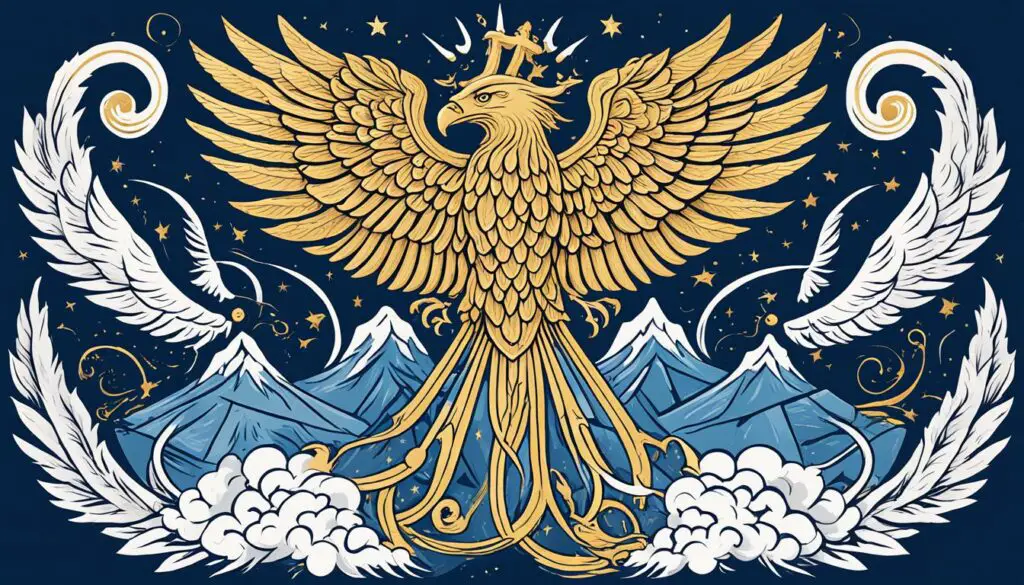
The Lacedaemonids come from the famous Zeus lineage. Their story is key to Spartan history. Lacedaemon, son of Zeus and Taygete, leads the way.
He married Sparta, Eurotas’ daughter, linking the Bronze Age Greece gods with Spartan rule.
This story is at the heart of the Lacedaemon Spartan myth, showing how deeply rooted the Spartans are in myth and divine beginnings.
King Tyndareos plays a big role in this story. He’s famous for being the ancestor of great heroes like Helen of Troy and Castor and Pollux.
These heroes connect the Spartans to their mythical past. Their tales blend the divine with the mortal.
This mix shaped Spartan leadership, making the Lacedaemonids part of a rich Spartan history.
The Atreids: Mythical Heroes and Kings
During the Mycenaean Period, stories of the Atreids highlighted ancient Greek heroism and tragedy.
The House of Atreus links to King Tantalus of Lydia. He’s known for offering his son’s flesh to gods, except Demeter, making a dark mark on their lineage.
Pelops ventured from Lydia to Pisa in a chariot with golden wings, a present from Poseidon.
His descendant, Atreus, later ruled over the Mycenaeans. Atreus faced great challenges, including a grueling act of revenge on his brother.
This tale of vengeance ended tragically for Atreus, illustrating a dark family cycle.
Menelaus and Agamemnon, Atreus’s sons, also played significant roles. They initially sought shelter in Sparta before eventually dethroning Thyestes.
Menelaus became a key figure as the Spartan ruler who married Helen of Troy. Their connection sparked the epic Trojan War.
Agamemnon’s tale is especially intriguing. From sacrificing his daughter to leading war against Troy, his life was filled with drama.
It ended tragically with his murder by Clytemnestra. This story weaves the fates of many Atreids together.
Helen’s abduction led to the grand Oath of Tyndareus. It bound Greek heroes in defense of her marriage, leading to the Trojan War.
Through these stories, the House of Atreus shaped both Mycenaean and Spartan history significantly.
Studying the Atreids reveals the intricate history of ancient Greece. Their tales not only entertain but also provide deep insight into historical events and family lineages.
The Heraclids and the Return of the Heracleidae
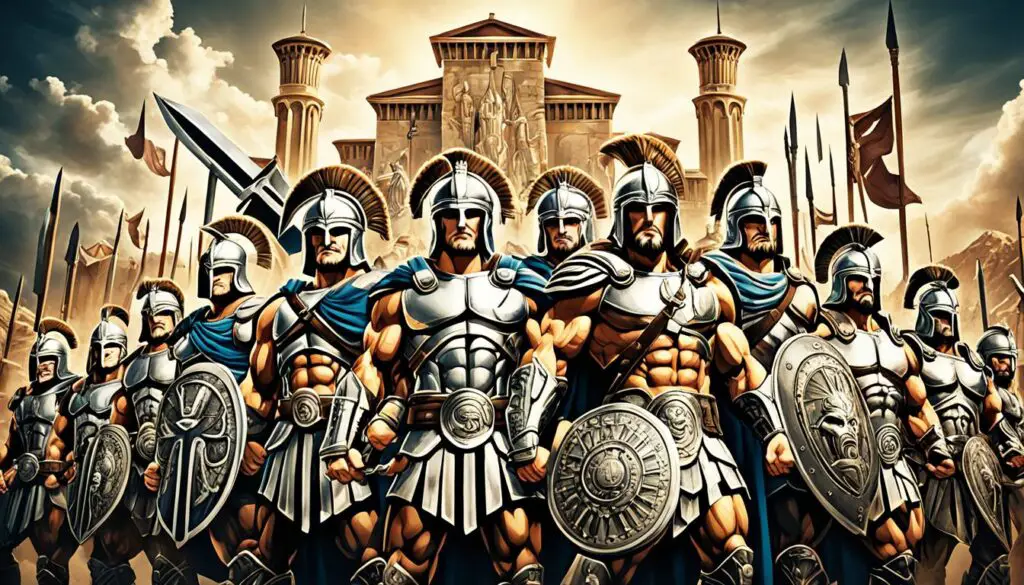
The Heraclids were the descendants of Hercules. They had a huge impact on Spartan history.
They traced their family line back to Heracles, which became the basis for the Spartans’ royal claim.
Their story is closely tied to the Doric Invasion. This event, known as the “Return of the Heracleidae,” mixed myth with real history.
It highlighted their belief in their divine right and their amazing achievements.
The Descent from Hercules
The Heraclids came from Hyllus, one of Heracles’ offspring with Deianira. They included well-known names like Tlepolemus and Telephus.
Also, important Heraclids such as Macaria, Lamos, and Bianor were of this line. Their noble background strengthened their right to lead.
It connected the myth of Heracles with the real political shifts of the Doric Invasion.
The Conquest of Sparta
The Heraclids won control of Sparta through military might. This won them two powerful royal families: the Agiads and the Eurypontids.
The stories of these Spartan rulers are full of major wins.
Hyllus, at the forefront, showed the spirit of fighting for their rights. This effort continued for many years, allowing the Heracleidae to reign in Lacedaemon until 221 BCE.
The Agiad Dynasty
The Agiad dynasty was one of the main royal families in Sparta, along with the Eurypontids.
It had a long and glorious history. It takes its name from its first king, Agis. The Agiad line ruled Sparta from the late 10th century BC to about the 3rd century BC.
Its famous kings included Leonidas I, who became a hero at the Battle of Thermopylae in 480 BC, and .
Sparta really grew and became powerful under the Agiads. The founder, Eurysthenes, started building what would be a mighty state.
Stories from history tell how kings from the Agiad line, like Pleistarchus and Agesipolis I, shaped Spartan life and rules.
The history of the Spartan kings shows how they fought for power and led with skill. Writings say that the Agiad kings were smart and brave.
Agesipolis III, the final king from the Agiad line, was taken down by Lycurgus, a king from the Eurypontid line, in 215 BC.
The Agiad and Eurypontid kings shared power in Sparta. This showed the often stormy history of Sparta under Agiads.
Stories and things found in the ground show a time when who held power, where they came from, and how they were seen was always changing.
The Eurypontid Dynasty
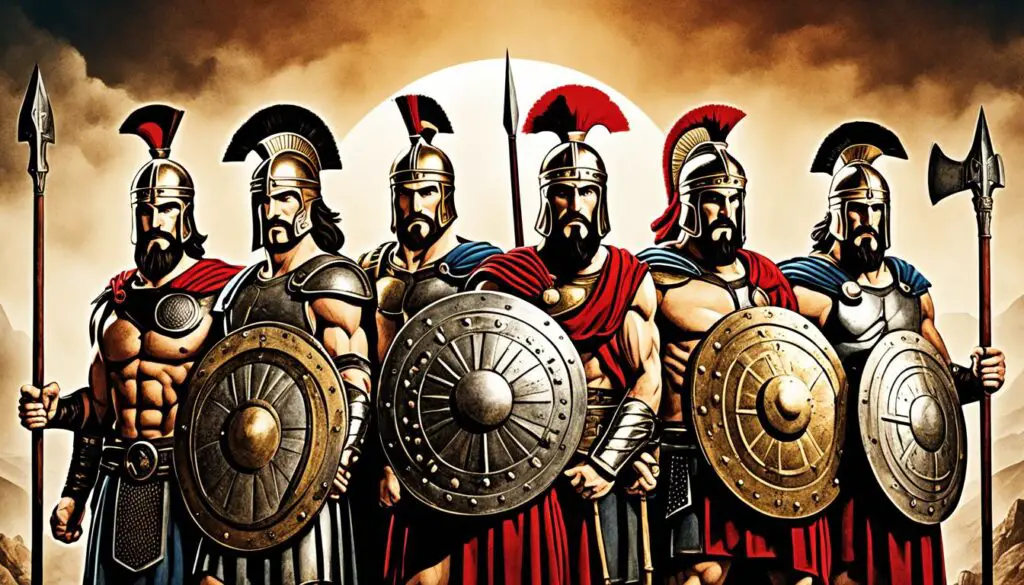
The Eurypontid Dynasty, named after founder Eurypon, was key in ancient Sparta. It shaped both political and social life.
Agesilaus II, a top Eurypontid king, made significant contributions through his leadership and military actions.
Notable Kings and Their Achievements
King Charilaus was a standout in the Eurypontid line. He followed Eunomus and was famous for keeping peace in Sparta.
During his rule, the Reforms of Lycurgus formed the basis of Spartan society. This kept the influence of the Eurypon lineage strong in Spartan rule.
Born around 444 BC, Agesilaus II became king in 399 BC with Lysander’s backing. He led successful military campaigns and showed great diplomatic skills.
Agesilaus II fought in Phrygia and Lydia and played a major role in the Corinthian War. His work in the Peace of Antalcidas in 387 BC broke up Thebes’s Boeotian League.
Key Battles and Events
The Eurypontid Dynasty faced many important battles and events. Agesilaus II’s fights against the Persian Empire and role in the Corinthian War showed Spartan courage.
But, his actions at a peace meeting in 371 BC with Thebes led to conflicts. These conflicts reduced Spartan influence.
Despite the strong rule of kings like Agesilaus, the power of the Eurypontid kings faded. Ephors began to have more power in the government, weakening the monarchy.
Yet, the work of the Eurypon lineage, especially Charilaus and Agesilaus II, prove the Eurypontid dynasty’s enduring impact on Spartan history.
King Leonidas and the Battle of Thermopylae
In 480 BCE, Leonidas I became a hero at the Battle of Thermopylae. As the 17th king of the Agiad dynasty, he led a small group of 7,000 Greek soldiers.
They faced a huge Persian army, possibly between 70,000 and 300,000 men led by Xerxes I.
The battle lasted three days and showed Spartan bravery against very bad chances. Leonidas and his 300 Spartans fought with other Greeks, like 1,100 Boeotians, to defend the pass at Thermopylae.
The fight at Thermopylae was a key event in historical battles of Greece. Even though the Persians won and Leonidas died, the Greek effort was powerful.
It boosted Greek spirit and helped them win later battles against Persia.
Leonidas and his troops are remembered for their courage and selflessness. They are the symbol of what a Spartan warrior stands for.
Their story is told in many ways, including a statue from 1955 and the movie “300” from 2006. The Thermopylae last stand is proof of Spartan’s continual bravery.
The Role of Queens and Consorts
In ancient Sparta, queens and consorts were more than just ceremonial figures. They had a big say in Spartan leadership and society.
For instance, Gorgo of Sparta offered key advice to her husband, King Leonidas, guiding Spartan politics.
Gorgo, born circa 516 BC, was Cleomenes I’s daughter, an Agiad king. She became important early on. At a very young age, she advised her father on political matters.
Her marriage to Leonidas I only enhanced her influence in Sparta.
Notably, during the Battle of Marathon, Gorgo’s quick wit saved many. She gained much praise for this from the Athenians.
With her strong political skills and personal bravery, Gorgo stands out as a leading woman in ancient Greece.
Spartan women did more than just support their husbands. They played a key role in raising future kings, like Gorgo’s son.
These women were crucial in shaping the next leaders of Sparta.
Sophia of Prussia is another example of female influence. She was Queen of Greece twice. She and King Constantine I had a big family and she led charitable efforts.
Sophia’s work in health care highlighted her deep impact on Greek society.
Her education in England made her a strong supporter of Queen Victoria’s ideas. Despite major challenges, Sophia stood out as a powerful figure.
Her legacy cemented the value of female leaders in Greek history.
Looking at women like Gorgo and Sophia shows us the important role of queens in leadership. T
hey were key figures, not just in Spartan history, but in larger historical and cultural contexts too.
The Decline of the Spartan Kingship
The downfall of Sparta is a key moment in history. It is linked to many reasons for Spartan decline, such as lost battles, fights within, and the fading of Spartan power.
Cleomenes I, ruling from about 520 to 490 BCE, changed Spartan kingship. His success in helping Athens break free in 510 BCE showed Sparta’s attempt to lead.
As time passed, changes in Sparta’s system chipped away its strength. The decision not to back the Ionians against Persia in 499 BCE marked another setback.
With each loss, Sparta’s kingship lost ground.
Many kings followed, like Leonidas I, famous for the Battle of Thermopylae. Yet, pressures from outside and conflicts within led to Sparta’s downfall. Discussions between scholars, as John Lazenby highlights in “The Spartan Army,” make the story even trickier.
They debate who the rightful kings were.
By 192 B.C., power had shifted so much that the end was near. Rome began to rule the once strong Sparta, ending its royal line.
This marked a new era without the strong monarchy. Scholars were then free to delve deep into understanding Sparta.
Diodorus’ writings offer a glimpse, though unclear, into the Spartans’ history. For more on how Sparta was governed, check out further readings like ancient Sparta reading.
Legacy of Spartan Rulership
The Spartans’ impact is still felt today, influencing how modern culture sees bravery and discipline.
We explore the powerful Spartan legacy and its cultural effects that echo through time.
Influence on Modern Culture
Sparta’s stories from ancient times are alive in today’s media. The movie “300” and books have made people everywhere admire Spartan courage.
They show the cultural impact of Sparta, focusing on their strict way of life, skills in war, and memorable battles.
Hero Cults and Memorials
Remembering past heroes, like the Spartans, is important in their legacy. Tributes to Spartan kings, especially Leonidas, show how they are still respected.
In ancient Greece, hero rituals praised Spartans’ courage and leadership, represented by King Leonidas’s famous fight at Thermopylae.
Memorials of Spartan kings always remember their brave actions during key moments in Greek history.
Conclusion
The kings of Sparta, from the famous Leonidas I to strong Agesilaus II, are key to Sparta’s history.
They built the Spartan military way and left lasting stories of Sparta. They faced tough politics and battles, showing Spartan ideals: discipline, bravery, and smart planning.
Agesilaus II led an 8,000 Spartan army into Asia, fighting hard from 396 to 394. Leonidas I’s stand at Thermopylae is famous.
There, he fought the huge Persian army, showing Spartan courage.
Thinking about Spartan kings, we see complex politics and war. Even after their power faded, Spartan kings show us how to lead and govern.
Their stories teach us about leadership and war even today.


